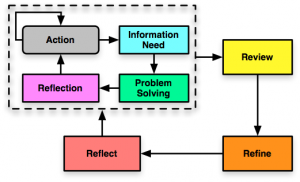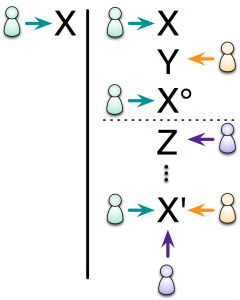For April Fool’s of this year, we (the Internet Time Alliance, with large credit to Jane and Harold) posted a message on our site:
The Internet Time Alliance (ITA) has spent much of the past year on a mission.
We have located and assembled a huge collection of informal learning content.
Today we’re publishing it and offering a free subscription to all individuals as well as corporate rates.
“Without content there is no learning. Repositories of informal learning content
such as this will underpin much of the social and informal learning over the
next 5 years.”
Lois Kean, CLO, Polar Foil LLC*Sign up today for the ITA Informal Learning Collection!

Clicking the link took you to another page where we explained:
The Ultimate Content Collection for All Your Informal Learning Needs!*
*Nothing but snake oil here, folks.
The Internet Time Alliance can help you navigate the snake oil and work smarter with Informal and Social Learning. Any time after April Fool‘s Day, that is
While the ad was a joke, the issue is real: folks can still believe that there’s no learning without formal content. That may be true for novices, but those who know what they’re doing and what they need can very well learn from resources they find on their own, and from each other!
The content may be out there, or it may have to be co-created, but it can’t be in the hands of formal designers and it can’t all be found in the corporate resources. As things get more complex and faster and more unique, the need for access to others and the rich resources of the internet are a bare minimum. There’s a role for formal learning and formal content (e.g. performance support), but supporting learners to have access to a much richer suite of resources than an L&D team can design can really empower people. Moreover, having them help each other and create new understandings and knowledge is the key to making progress in this new, faster, world.
We’re seeing companies succeed with these approaches, in small instances and across the organization. It’s not that there isn’t a role for formal content, it’s just that, as my colleague Charles Jennings talks about, the 70:20:10 rule (individuals tag valuable learning as coming 70% from the workplace, 20% from mentoring/coaching, and only 10% from formal leaning) suggests that our investments in effort and support are not matched to the value of the contribution.
You do want to go beyond just formal learning. It may seem we go over the top, but I’ve found that if you want to get people to Y, you have to talk about 2Y to have any chance. If you just talk about Y, you’ll get them to .5Y. And we really believe that the benefits – a more positive workplace, a more nimble organization, greater innovation and problem-solving – significantly outweigh the relatively low costs.
So, what’s it going to be, snake oil or social and informal learning?
*Lois Kean is an anagram of SnakeOil and Polar Foil is an anagram of April Fool


